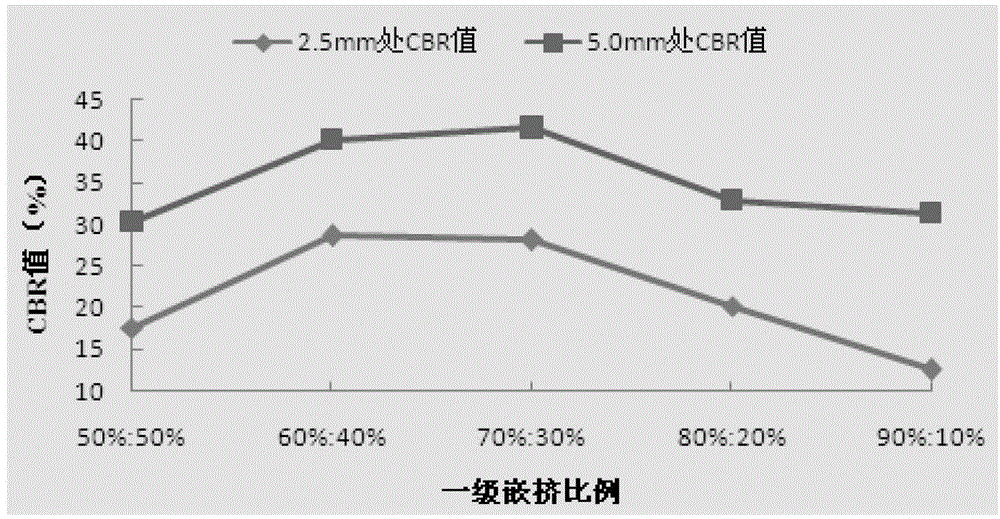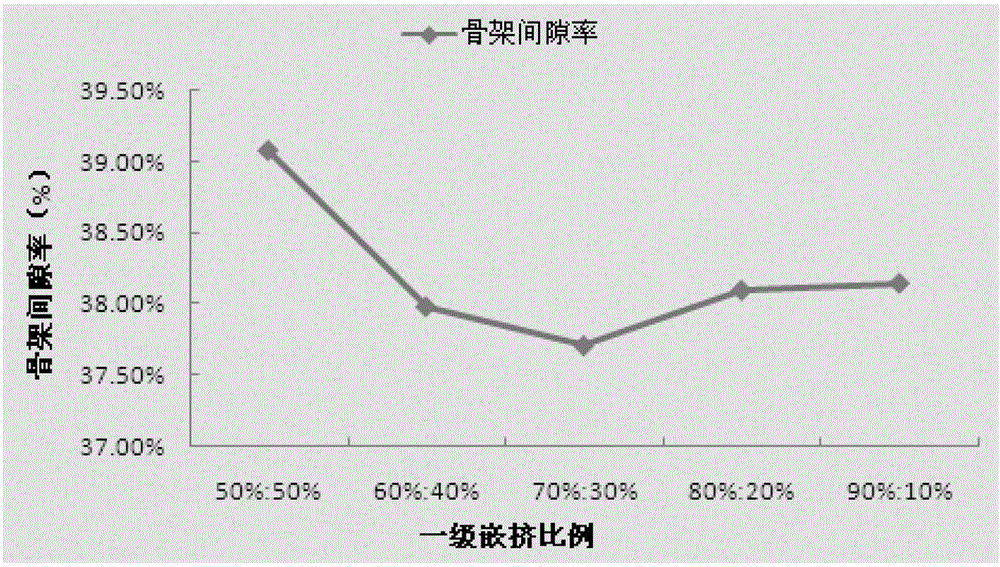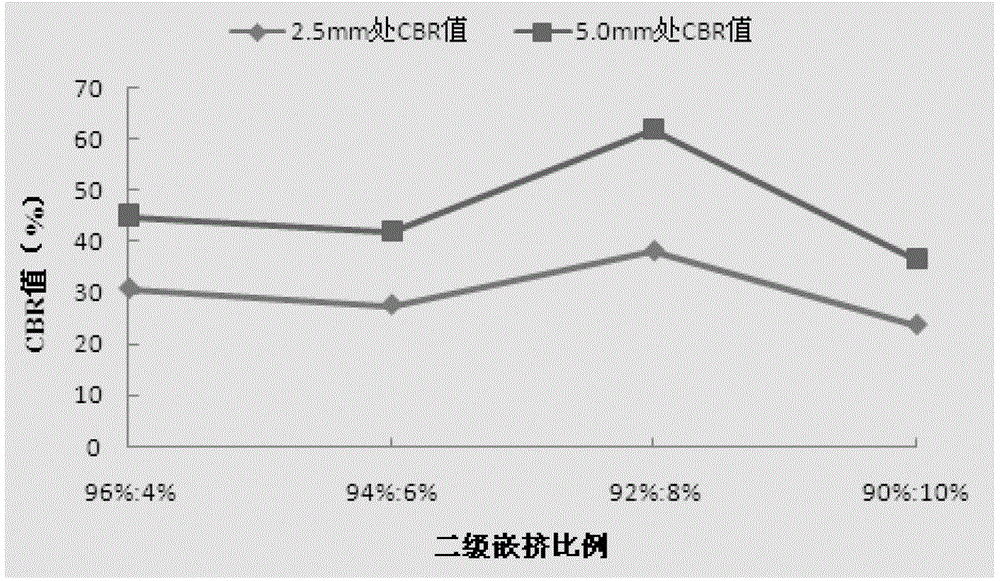Grading design method of skeleton dense structure for grading macadam base
A technology of dense skeleton and graded gravel, applied in the field of pavement graded gravel base, to achieve the effect of scientificity, accuracy and good road performance
- Summary
- Abstract
- Description
- Claims
- Application Information
AI Technical Summary
Problems solved by technology
Method used
Image
Examples
Embodiment Construction
[0029] The present invention comprises the following steps:
[0030] 1) First, according to the division of coarse and fine aggregates by Bailey method, the boundary point of coarse and fine aggregates is selected. The Bailey method proposes the key sieve hole for dividing coarse and fine aggregates—the first control sieve hole. The size of the sieve hole is determined to be 0.22 times the nominal maximum particle size of the mixture, which can be expressed by the following formula.
[0031] PCS=NMPS×0.22
[0032] In the formula: PCS—the primary control sieve size (Primary Control Sieve);
[0033] NMPS—Nominal Maximum Primary Sieve.
[0034] According to the Bailey method theory, considering the nominal maximum particle size of commonly used mixtures in my country, the boundary point of coarse and fine aggregates of commonly used mixtures—the first control sieve hole is proposed, as shown in Table 1.
[0035] Table 1 Demarcation point of coarse and fine aggregates under eac...
PUM
| Property | Measurement | Unit |
|---|---|---|
| particle diameter | aaaaa | aaaaa |
| density | aaaaa | aaaaa |
Abstract
Description
Claims
Application Information
 Login to View More
Login to View More - R&D
- Intellectual Property
- Life Sciences
- Materials
- Tech Scout
- Unparalleled Data Quality
- Higher Quality Content
- 60% Fewer Hallucinations
Browse by: Latest US Patents, China's latest patents, Technical Efficacy Thesaurus, Application Domain, Technology Topic, Popular Technical Reports.
© 2025 PatSnap. All rights reserved.Legal|Privacy policy|Modern Slavery Act Transparency Statement|Sitemap|About US| Contact US: help@patsnap.com



